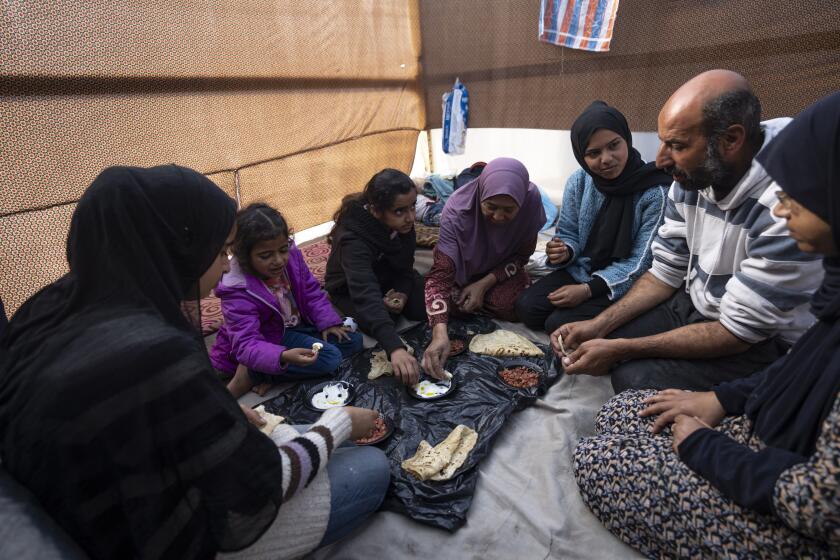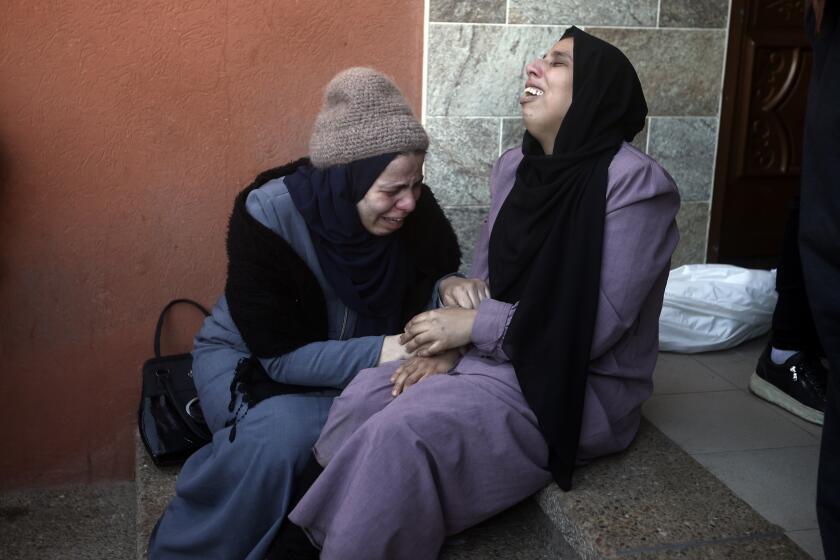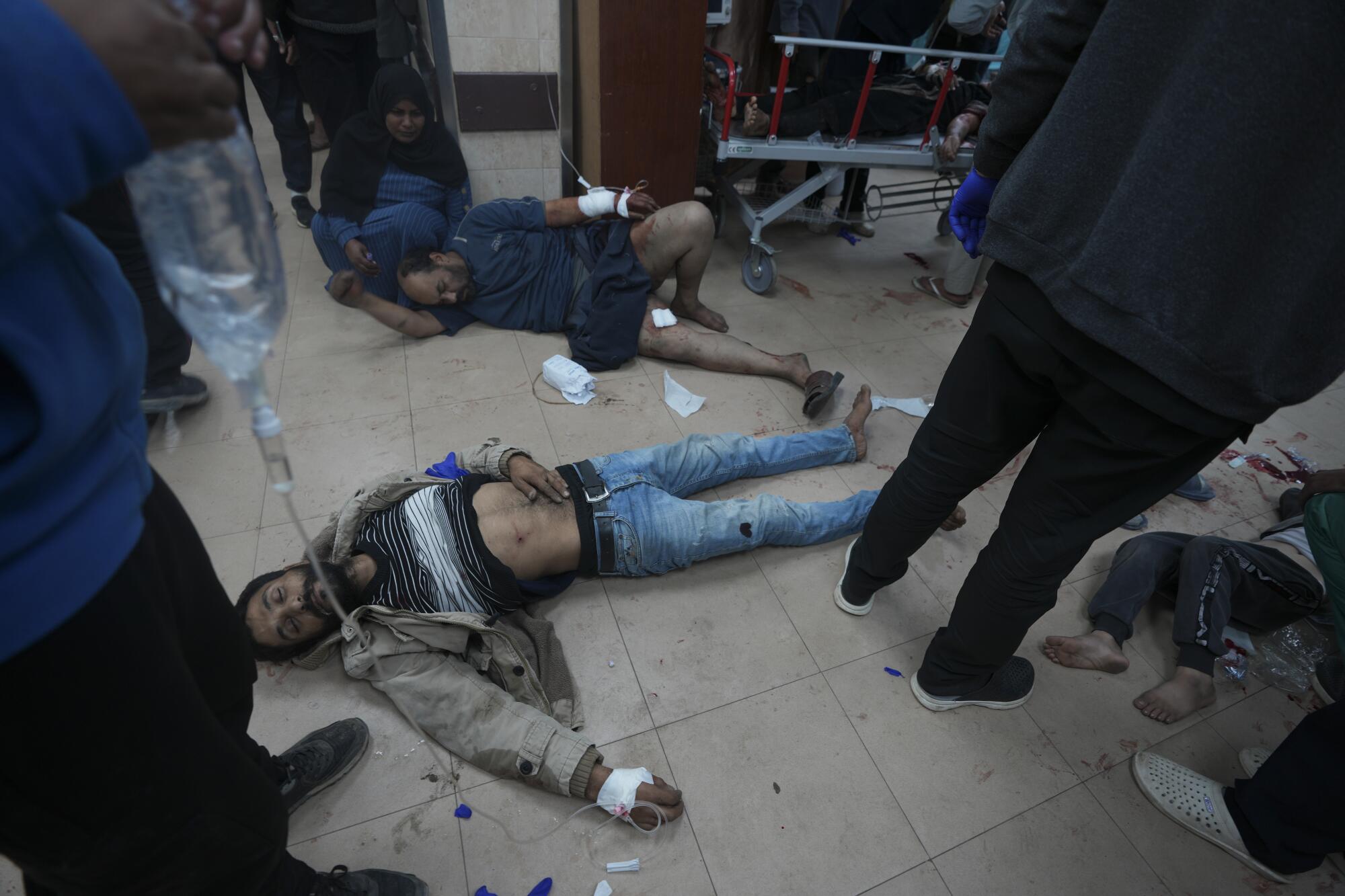
BEIRUT — An Israeli airstrike killed an elite Hezbollah commander Monday in southern Lebanon, the latest in an escalating exchange of strikes along the border that have raised fears of another Mideast war, even as the fighting in Gaza exacts a mounting toll on civilians.
The strike on an SUV killed a commander in a secretive Hezbollah force that operates along the border, according to a Lebanese security official who spoke on condition of anonymity, in keeping with regulations. The commander, Wissam Tawil, was a veteran of the Iranian-backed Lebanese force that took part in the 2006 cross-border kidnapping of two Israeli soldiers that triggered the last war between Israel and Hezbollah, an official in the group said.
Tawil is the most senior militant in the armed group to have been killed since Hamas’ Oct. 7 incursion into southern Israel, an attack that triggered all-out war in Gaza and lower-intensity fighting between Israel and Hezbollah that has escalated since an Israeli strike killed a senior Hamas leader last week outside Beirut.
U.S. Secretary of State Antony J. Blinken, who is in the region this week, appears to be trying to head off a wider conflict.
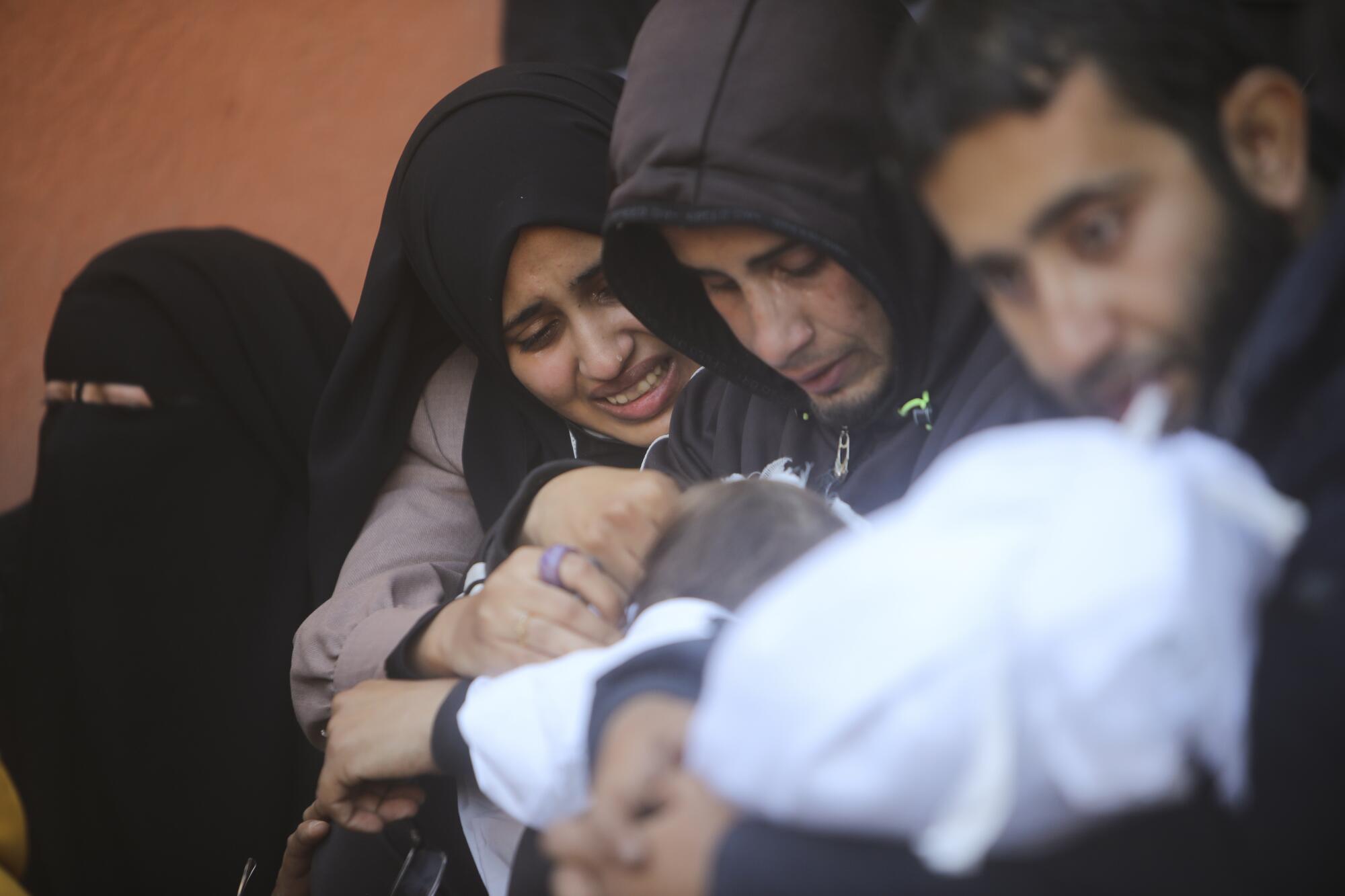
Fighting continued in northern Gaza, even after Israel said it had largely wrapped up major operations there to focus on the central region and the southern city of Khan Yunis, to which thousands more Palestinians have fled.
Israeli officials have said the fighting will continue for many more months as the army seeks to dismantle Hamas and rescue scores of hostages taken during the militant group’s Oct. 7 attack.
Israel’s attacks have killed more than 23,000 Palestinians and devastated vast swaths of the Gaza Strip, local health authorities say, displacing nearly 85% of its population of 2.3 million and leaving a quarter of its residents facing starvation.
Medics, patients and displaced people fled Gaza’s main hospital as the fighting between Israeli forces and Palestinian militants drew closer, witnesses said Monday. Losing the facility would be a major blow to a health system shattered by three months of war.
Palestinians seeking refuge in southern Gaza say every day has become a desperate struggle to find food, water, medicine and working bathrooms.
Doctors Without Borders and other aid groups withdrew from Al Aqsa Martyrs Hospital in Deir al Balah in recent days, saying it was too dangerous amid Israeli bombardment, drone strikes and sniper fire. That spread panic among people sheltering there. Thousands left, joining the hundreds of thousands who have fledfarther south, according to a hospital staffer, Omar al Darawi.
Tens of thousands of people have sought shelter in Gaza’s hospitals, which are struggling to treat dozens wounded each day in Israeli strikes.
Only 13 of Gaza’s 36 hospitals are even partially functioning, according to the United Nations humanitarian office.
Al Aqsa hospital has been struck multiple times in recent days, Al Darawi said. After the pullout, patients who could not be moved were concentrated on one floor to be treated by remaining doctors.
“They need special care, which is unavailable,” Al Darawi said.
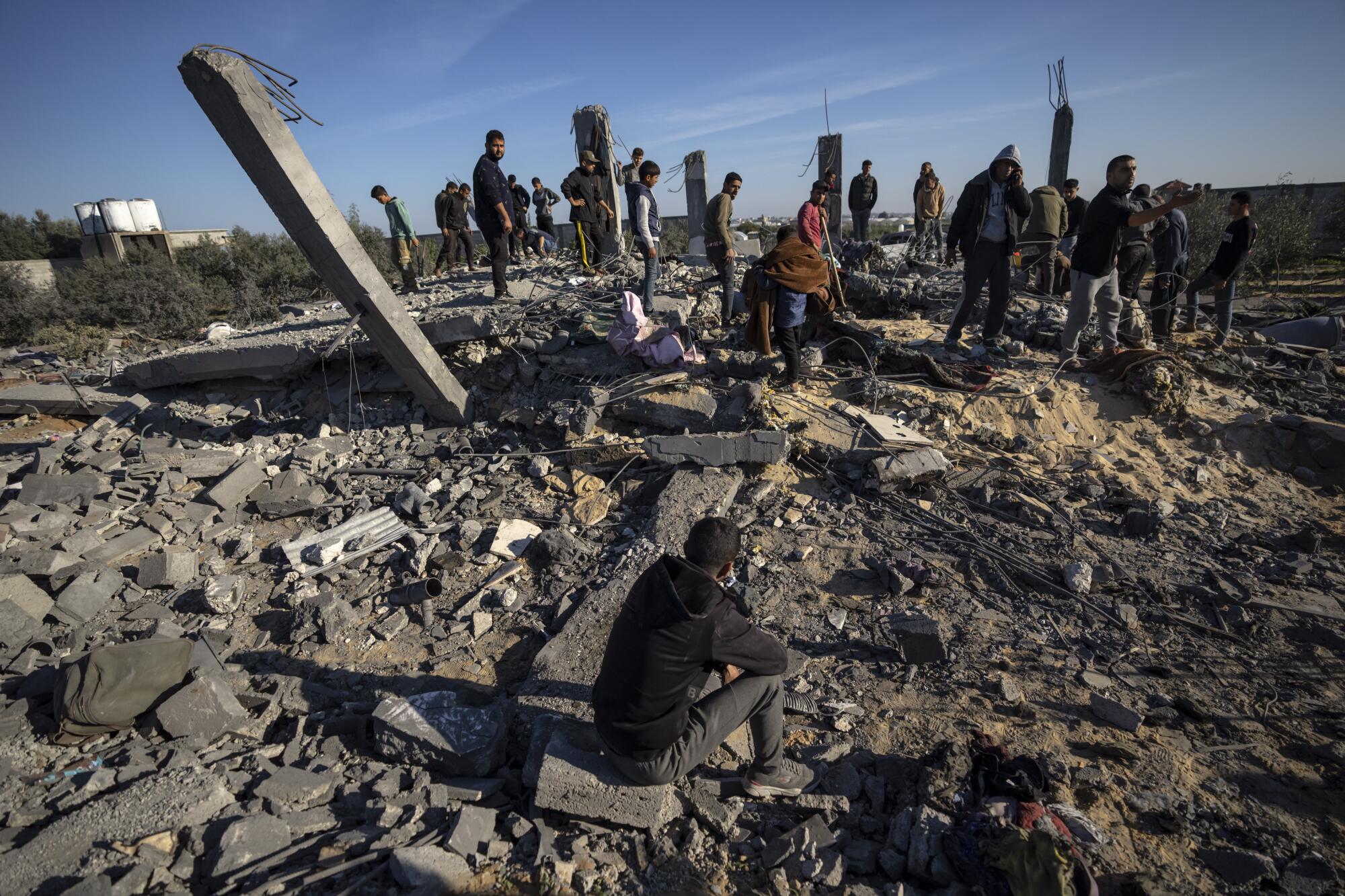
World Health Organization staff who visited Sunday saw “sickening scenes of people of all ages being treated on blood-streaked floors and in chaotic corridors,” Tedros Adhanom Ghebreyesus, the head of the U.N. agency, said in a statement. “The bloodbath in Gaza must end.”
More dead and wounded arrive at the hospital each day as Israeli forces advance in central Gaza, backed by heavy airstrikes. The military said Monday it had uncovered a large Hamas site for building rockets in the nearby Bureij refugee camp.
Thousands have been fleeing the area, heading south. Fifteen members of the Ayash family crammed into a van with their belongings for the journey. “Along the way, there was banging, missiles, bombing and planes,” said Khawla Ayash.
Reaching Muwasi, a coastal area outside Rafah, the family unloaded bags, blankets and thin mattresses and began setting up tents alongside other relatives.
The U.N. children’s agency, UNICEF, warned that 90% of Gazan children under 2 are consuming only bread and milk, and cases of diarrhea are skyrocketing.
“As the threat of famine intensifies, hundreds of thousands more young children could soon be severely malnourished, with some at risk of death. We cannot allow that to happen,” said Catherine Russell, executive director of UNICEF.
The situation is even more dire in northern Gaza, which Israeli forces cut off from the rest of the territory in late October.
Palestinian hospital officials say an Israeli strike hit a home in a southern Gaza “safe zone,” killing at least 12 people, almost all of them children.
Entire neighborhoods have been demolished, and most of the population has fled. Tens of thousands who remain face shortages of food and water. The WHO said late Sunday that it has not been able to deliversupplies to northern Gaza for 12 days.
Israel is still battling what it describes as pockets of militants.
An airstrike early Sunday flattened a four-story home filled with displaced people in the urban Jabaliya refugee camp, killing at least 70, including women and children, according to Mahmoud Bassal, a spokesman for Gaza’s civil defense. There was no immediate confirmation from the Health Ministry, which has struggled to maintain its operations in the north.
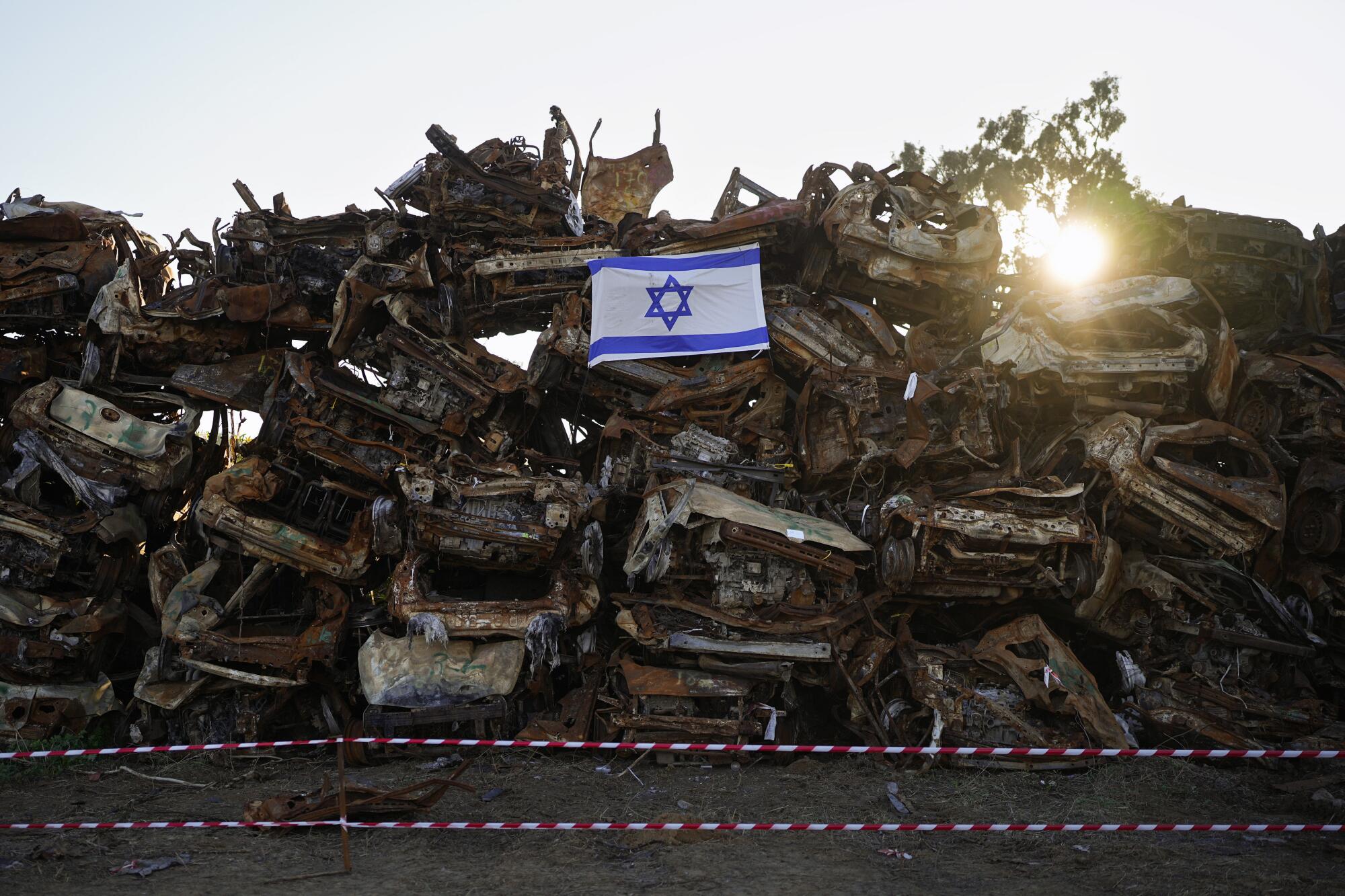
In addition to those killed, more than 58,000 Gazans have been wounded since the war began, according to the Health Ministry in the Hamas-run territory. The death toll does not distinguish between combatants and civilians. Health officials say about two-thirds of those killed were women and children.
Israel blames Hamas for civilian casualties because the group operates in heavily populated residential areas, but the military rarely comments on individual strikes. The military says it has killed some 8,000 militants, without providing evidence. It says 176 of its own soldiers have been killed.
Blinken, who met Sunday with the leaders of Jordan and Qatar, again spoke of the need for Israel to adjust its military operations to minimize harm to civilians and allow more aid into the territory. But his main focus appeared to be preventing the war from spreading.
A Hezbollah rocket barrage hit a sensitive air traffic base in northern Israel on Saturday, in one of the biggest attacks in three months of low-intensity fighting along the border. The militant group said it was an “initial response” to the killing of Hamas’ deputy political leader Saleh Arouri last week in a Beirut suburb.
Start your day right
Sign up for Essential California for the L.A. Times biggest news, features and recommendations in your inbox six days a week.
You may occasionally receive promotional content from the Los Angeles Times.
Both sides have sought to limit the fighting. Hezbollah appears wary of risking an all-out war that would bring massive destruction to Lebanon. Israeli leaders say their patience is wearing thin, and if the tensions cannot be resolved through diplomacy, they are prepared to go to war. They have expressed particular concern about the Radwan Force, the elite Hezbollah unit of which Tawil was a commander, which operates along the border.
Israeli Prime Minister Benjamin Netanyahu, visiting troops near the border, vowed to “do everything” possible to return “security to the north.”
“We prefer that this be done without a wider campaign, but that won’t stop us,” he said.
Hezbollah began firing rockets shortly after Hamas’ Oct. 7 attack. Hamas and other militants that day killed about 1,200 people in southern Israel, mostly civilians, and took some 240 hostages, more than 100 of whom were released during a cease-fire in November.
On the Lebanese side, nearly 200 people have been killed in exchanges with Israel, including 20 civilians. In Israel, five civilians and 12 soldiers have been killed along the Lebanese border, and more than 150 people have been injured. Tens of thousands of people on both sides of the border have been driven from their homes.
Mroue reported from Beirut, Shurafa from Deir al Balah and Jeffery from Cairo. Associated Press writers Kareem Chehayeb in Beirut and Samy Magdy in Cairo contributed to this report.
More to Read
Sign up for Essential California
The most important California stories and recommendations in your inbox every morning.
You may occasionally receive promotional content from the Los Angeles Times.
